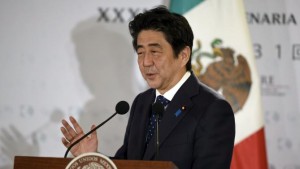25
Aug 2015
ASIA & LATIN AMERICA ECONOMY RELATION
The economy relation between the Asian countries and Latin America countries lately have been going strong, especially with China. So many agreements have been made to ease the trade between this countries. Now, let’s find out more about the facts and what potentials that we have with this Asia and Latin America economy relation.
What Can Asia Do to Boost Latin America’s Economic?
There are so many deals and investments going on between Latin America countries and Asian countries, particularly with China. China has been one of the most important commodity sources of Latin America.
In general, Asia can help Latin America to empower its economy—by providing an example of successful regional trade integration and through greater direct links across the Pacific that benefit both sides. But still, we need a clear and realistic objectives to assess this benefits, a long-term strategy, and attention to the political and social implications of greater economic integration.
China may be very important, but it’s not enough to define the big picture…
China is not the only country that plays a big role in this economic relation. It is mentioned that Korea has moved up several places in the rankings of top trading partners for Brazil, Chile, and Peru since 2000. Likewise, India and Japan are important trading partners Latin America countries.
Japanese foreign direct investment into Latin America is one of the significant examples. It exceeded $110 billion between 2005 and 2014. And Chinese foreign direct investment to the region has increased sharply over the past few years—from a total of $6 billion in 1990–2009 to an average of $10 billion per year between 2010 and 2012.
What Are The Obstacles That We Have?
We know that Latin America’s export mainly are the raw materials, whereas they import a broad types and sets of manufactured goods from Asia. Yes, this situation can reflect the entrenched comparative advantages, but on the other side, it also suggests that Latin America has not been able to leverage growing trade flows to transform its own economic structures, which remain undiversified. Hence, the excess knowledge and innovation effects accompany trade relations have remained limited. Undiversified export bushel and limited economic complexity have also constrained the emergence of intraregional supply chains, except Mexico because it has integration into the North American manufacturing complex.
Meanwhile, trade patterns within Asia have changed dramatically over the past 20 years. China particularly has emerged as the vital thing of large cross-border trade flows, driving technology intensification, and the emergence of complex global supply chains. However, it has not played out evenly across Asia.
How to Overcome Those Obstacles?
Latin America has similar domestic obstacles with other Asian countries, and this may help to explain why Latin America has failed to develop productive complementarities and deeper intraregional trade relations. A range of supply-side bottlenecks, including weak education systems, infrastructure gaps, difficult business environments, and various trade barriers have constrained productivity growth, held back investment and innovation, and limited gains from closer relations with other economies.
Peruvian Women Working at The Grass Field
So, how to alter these challenges and turn it into a sustainable growth booster? Policymakers in Latin America will need to reduce the existing obstacles to trade (including high transport costs) in the region. But, on the other side, we can see a broader strategic perspective that is also critical:
– Growth reality check. Against a backdrop of lower commodity prices, tighter external financial conditions, and reduced macroeconomic policy space, achieving robust growth will be more challenging than over the previous decade. Prospects will depend on decisive efforts to address long-standing structural weaknesses that have held back investment and productivity.
– Greater trade integration can support the development of stronger Latin American economies, but objectives have to be realistic. As a number of empirical studies have documented, trade integration tends to have positive effects on productivity and knowledge transfer. But it is not a magic wand. Efforts to boost intraregional trade as well as stronger links with Asia will need to be underpinned by domestic reform agendas aimed at creating better conditions for entrepreneurial initiative, innovation, and diversification.
– Broad political backing is crucial. Despite its overall benefits, greater trade integration can have divergent effects on different groups of society. Managing these implications well and ensuring shared gains in prosperity is critical to create and sustain political support for greater openness.
“Problems are not stop signs, they are guidelines – Robert Schuller”
Article Source : World Economic Forum
Related Articles click here
Contact us at www.sbeinspection.com for more details and inquiries of quality inspection services


































